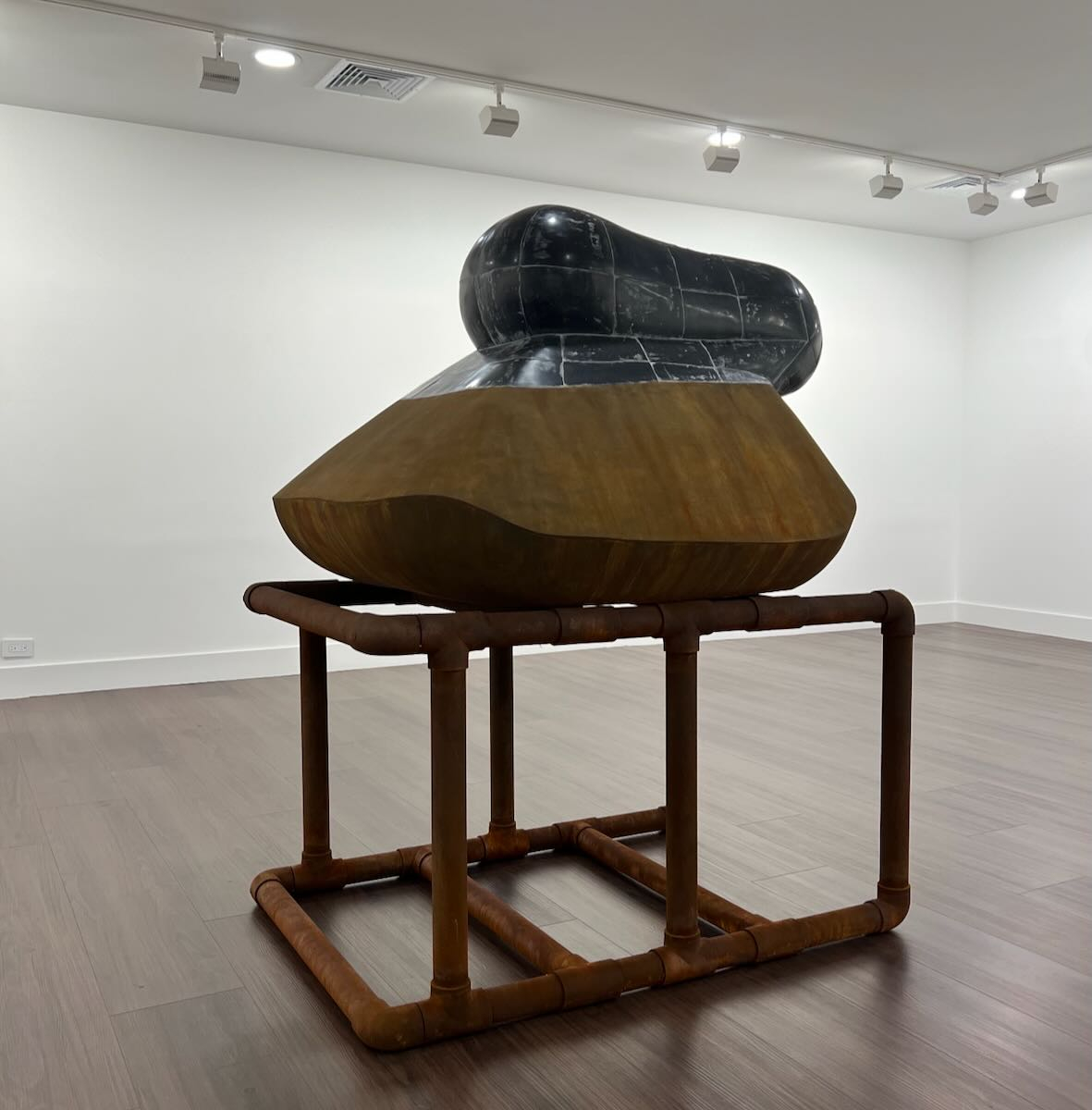
Hiroyuki Hamada: New Sculpture
May 6 - June 13, 2025
Bookstein Projects, 39 East 78th Street, NYC
This exhibition of Hiroyuki Hamada’s new sculptures comprises eleven works, both free-standing sculptures and wall hangings. I hesitate to term all of the latter “bas reliefs,” while several of the major works certainly are. A nd those are very similar in formulation to the free-standing sculptures, although they are sans the hallmark pedestals, which stand to be part and parcel with the abstract forms they support.
The smaller wall-hung pieces are more akin to bricolage painting, as folded, bent, and twisted scraps of what looks like metal or leather are affixed to flat, subtly toned, apparently wooden substrates. The larger works impart a distinctly Japanese aesthetic in their elegant, zen-like, and graceful simplicity of pure form; as such, without any backing besides the wall, or they are free-standing. What appear to be natural materials, such as white or black ceramic tile, rusted iron, or stone, are also displayed on bases of what look to be thoroughly rusted pipes. To be clear on this point: the artist considers these works painted sculptures. They are all constructed of synthetic materials. Hamada’s masterful use of trompe l'oeil surfacing is astounding. The rusty piping is, in fact, PVC, and the aquiline shapes they support are carved insulation foam coated with painted plastic resin. Polystyrenes have been popular with artists since at least the 1950s and '60s when Jean Dubuffet and Nikki de Saint Phalle first explored the then-new found resource.

The properties of these media allow for direct impulsive carving and so generally disregard the conventional sculptural necessity of pre-construction of an armature, or so to speak, skeleton within, thereby allowing the artist an unrestrained free hand in expression. Notably, Dubuffet topped off his monumental works with stucco while de Saint Phalle frequently embellished her works with mosaics. More recently, others have crusted the artifice with epoxies, fiberglass, urethane putties, or other substances; then painted them in order to stave off degradation resulting from exposure to sunlight. These are industrial materials often used in construction, or automotive assembly, shipbuilding, and even for making surfboards. Significantly, pragmatic considerations have enabled artists to explore and discover various possibilities. These newfound materials were lightweight, comparatively inexpensive, and easily manipulated without the need for a foundry. If Hiroyuki Hamada’s works were composed of what they convincingly appear to be, they would weigh more than could be lifted in this gallery’s elevator, or hung on its sheetrock walls. Yet there are laborious old-school techniques that could enable his vision with a forge and kiln. Frankly, Hamada’s mastery of faux finishes over the coated, smoothed, and refined forms is so complete that I didn’t notice until he mentioned it.
The illusionistic pragmatism is not what grabbed me. I was attracted to the work purely for it’s aesthetics–it’s elegance: the simple smooth forms which reference predecessors Isamu Noguchi and Jean Arp’s exigencies, amongst many functional designers, who modeled their modernist forms in traditional materials–whilst Hamada’s tasteful combinations of industrial supplies are not what they seem to be at all, presenting a fascinatingly duplicitous conundrum.
